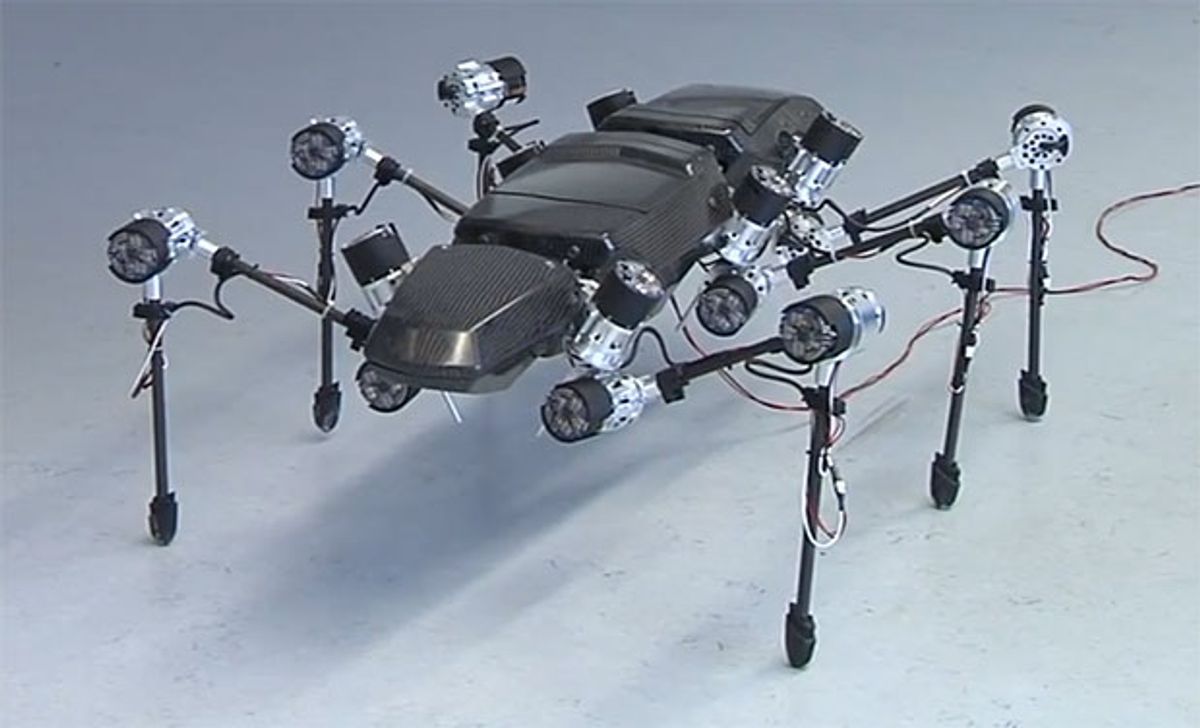After last week’s mammoth Video Friday that nearly killed both yours truly and our poor website, I’m pleased to report that this week, we’re going to be a bit less, er, prolific. So, you can breathe a sigh of relief and actually make plans for the rest of the day that involve something besides watching robot videos. Let’s get to it.
In April of 2011, we ended an article on CITEC Bielefeld’s HECTOR hexapod like this:
When completed, HECTOR will be one meter long and able to carry payloads of up to 30kg, including customized interchangeable sensor systems.
“When” is right now, and HECTOR’s up and walking around:
At the very end of the video, special thanks are given to “all the stick insects that walked on treadmills.” The robot is cool, but c’mon, the videos we really want to see are the stick insects walking on treadmills.
[ EMICAB ]
From the Harvard Biodesign Lab, a soft robot that uses different wraps of fibers to control the direction in which it pneumatically expands, allowing different segments to either serve as anchors or actuators:
Snake + Laser = SNASER!
This is your Curiosity Rover Report:
[ MSL ]
With the AACUS system from ONR, you can fly a military cargo helicopter with a tablet.
The Office of Naval Research (ONR) demonstrates the Autonomous Aerial Cargo/Utility System (AACUS), which gives helicopters the capability for unmanned flight. AACUS consists of software and sensors that can be applied to a variety of rotary wing aircraft, and will provide the U.S. Marine Corps with the ability to rapidly support forces on the front lines, as an alternative to convoys, manned aircraft or air drops in all weather and possibly hostile conditions, with minimal training required by the requestor.
[ ONR ]
As much as we like to write about cutting-edge abstract robotics research, it’s nice to get an occasional reminder of why it all matters:
[Aldebaran ]
This Adept Quattro is incredibly satisfying to watch:
[ Adept ]
This is even more satisfying to watch:
Also, I’m hungry now.
[ Newtech ] via [ Gizmodo ]
As it turns out, Baxter isn’t that great at being Amish:
I’d love to see the robot try to milk a cow, though.
[ Rethink ]
We may as well finish up with something that’s very cool, and also very not real. The Walkalight is a concept for an autonomous flying lamp that obeys gesture commands. If it seems like it’s one of the more sane drone concepts that we’ve seen recently, that’s because it’s from 2012, before drones suddenly became the answer to every problem, including the problems that nobody actually has. But I digress.
Walkalight: is an air-filled, balloon-shaped, smart, levitating, agile lamp. It follows the movements of the user and can be controlled both by verbal and gestural command (kinect). Lamp is designed for use in lighting design tests in interior architecture or as a light source at film shootings etc. Lamp can be charged and refilled with a particular magnetic charging and air filling system. Its flying mechanism is based on drone (quadcopter) technology. It was initially planed as a futuristic idea, a system of a energy-saving alternative to conventional street lighting. Designer: Jaka Plešec.
Via [ Yanko ]
Evan Ackerman is a senior editor at IEEE Spectrum. Since 2007, he has written over 6,000 articles on robotics and technology. He has a degree in Martian geology and is excellent at playing bagpipes.



